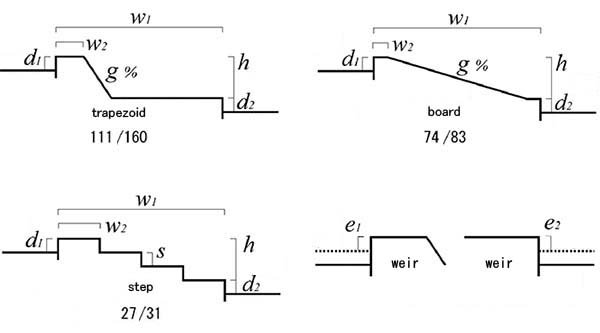japanese
Characteristics of water-familiar spaces for human behaviors
-

from left, trapezoid:Kawakami-yosui-seki, board:Serisawa-seki, steps:Ogawa-esuji-seki
In this research, the 276 cases of fixed weirs among the 83 watersheds were investigated of their physical usability as water-familiar spaces. The results were the followings. a) The high level of water-familiarity, which had been already uncovered through the precedent research limited within the specific area, was confirmed to be common among the other areas. b) Visibility of their bodies was mostly limited due to the conditions of the river banks and hindering objects such as trees and sandbanks. Accessibility to their surfaces was also limited due to connectivity between the river banks and their bodies in most cases. c) Usable areas tend to be larger on the surfaces which sectional forms were either boards or steps than on those of trapezoids. d) Only 10% of the riparian spaces had been developed for using the weirs as water-familiar spaces. There was no clear relationship between the spatial characteristics of the weirs and the usages of them for viewing objects while obvious relations were recognized in two cases, one for a pool and the other for a landing site. Issues of balancing the water-friendly activities with the operations for keeping the proper functions of the weirs had been coming out through comparing the conditions between the sides of intakes and the opposites.

-
more information
Murakami, S. (2012) : Research on Usability of 276 Fixed Weirs in 83 Watersheds as Water-Familiar Spaces: Journal of the Japanese Institute of Landscape Architecture:75(5)559-564







